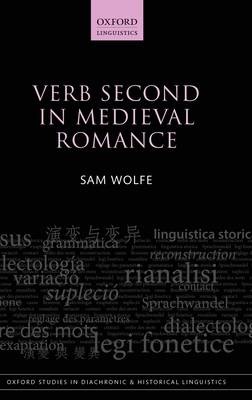
- Afhalen na 1 uur in een winkel met voorraad
- Gratis thuislevering in België vanaf € 30
- Ruim aanbod met 7 miljoen producten
- Afhalen na 1 uur in een winkel met voorraad
- Gratis thuislevering in België vanaf € 30
- Ruim aanbod met 7 miljoen producten
Zoeken
Omschrijving
This volume provides the first book-length study of the controversial topic of Verb Second and related properties in a range of Medieval Romance varieties. It presents an examination and analysis of both qualitative and quantitative data from Old French, Occitan, Sicilian, Venetian, Spanish, and Sardinian, in order to assess whether these were indeed Verb Second languages. Sam Wolfe argues that V-to-C movement is a point of continuity across all the medieval varieties - unlike in the modern Romance languages - but that there are rich patterns of synchronic and diachronic variation in the medieval period that have not previously been observed and investigated. These include differences in the syntax-pragmatics mapping, the locus of verb movement, the behaviour of clitic pronouns, the syntax of subject positions, matrix/embedded asymmetries, and the null argument properties of the languages in question. The book outlines a detailed formal cartographic analysis of both the attested synchronic patterns and the diachronic evolution of Romance clausal structure. The findings have widespread implications for the understanding of both the key typological property of Verb Second and the development of Latin into the modern Romance languages.
Specificaties
Betrokkenen
- Auteur(s):
- Uitgeverij:
Inhoud
- Aantal bladzijden:
- 208
- Taal:
- Engels
- Reeks:
Eigenschappen
- Productcode (EAN):
- 9780198804673
- Verschijningsdatum:
- 6/02/2019
- Uitvoering:
- Hardcover
- Formaat:
- Genaaid
- Afmetingen:
- 155 mm x 236 mm
- Gewicht:
- 453 g

Alleen bij Standaard Boekhandel
+ 418 punten op je klantenkaart van Standaard Boekhandel
Beoordelingen
We publiceren alleen reviews die voldoen aan de voorwaarden voor reviews. Bekijk onze voorwaarden voor reviews.








